Ryan Hall's Blog, page 148
July 20, 2017
Running Community Rallies To Support Gabe Grunewald’s Cancer Treatment
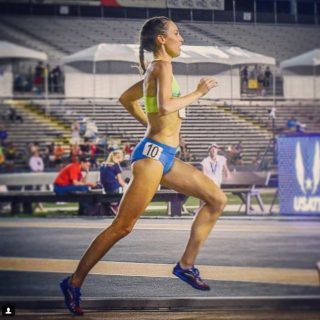
Last week, elite runner and cancer survivor Gabe Grunewald posted the heart-breaking Instagram update that her body did not respond to chemotherapy.
July 19, 2017
9 Reasons Why Having Running Friends Is Amazing
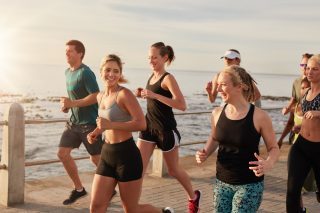
I’ve said it before and I’ll say it again: Runners are just good people. That means running friends are the absolute best. But if you need a list of reasons of just why running friends are so amazing, I’ve got you covered.
You always have someone to run with.
Your running friends are there for you during the three-mile shakeout that you just didn’t really feel like doing. And they are also there for that 20-miler that would have been completely boring without company. It’s so helpful to have a number of people who are always happy to join you.
You get to meet an awesome variety of people.
My running friends range in age from 20 to their 60s. They are employed in a wide variety of different careers. But running brings us together.
They’re supportive.
Your running friends understand what it’s like to accomplish a long run, set a new personal record or finish a marathon. It’s awesome to have the support of people who truly understand the sport.
RELATED: Buddy Up—The Benefits Of Training Partners
They want to hear you talk about running.
It’s a win-win situation, because you probably want to hear them talk about running, too. Not everyone wants to hear every split for your last speed workout, but you can bet that your running buddy will listen.
They want to see you post about running.
The Facebook posts and Instagram photos aren’t going to like themselves. And what is the point of even having Strava if not to review and like all of your friends’ runs. Training partners make it okay to take that sweaty selfie after a great run.
RELATED: A Runner’s Guide To What Not To Do On Social Media
You can talk it out with them.
Often you’re running together for two or three hours together, so you’re going to have to talk about something. You can be there for your friends, and they can be there for you. Both you and your running buddy will emerge from your miles with solutions to any problem.
They’ll eat with you.
Waffle cones, anyone? One of my friends and I will sometimes get waffle cones together at TCBY after an evening run. I love food, and it’s nice to have friends who will work out with you and then indulge.
You have someone to enjoy races with.
Racing with a friend helps ease those starting line nerves. Plus you don’t have to be alone at the post-race party. Once you’ve crossed the finish line, it’s time to celebrate!
And even if you don’t go to a race with a friend, you’re bound to know someone.
One good thing about runners is that there are a lot of us. If you participate in a race local to your hometown, you’ll likely see someone you know. And even if you don’t know anyone, runners can be pretty social people. I bet you’ll leave the race with some brand new running friends.
RELATED: 10 Amazing Benefits of Running You Might Not Have Known
The post 9 Reasons Why Having Running Friends Is Amazing appeared first on Competitor.com.
Couch-To-5K Apps To Get You Up And Running
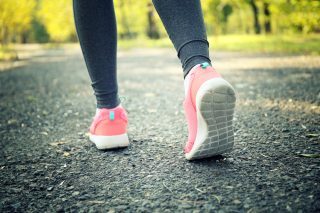
If you’ve been out recovering from an injury or have resolved to start running for the first time, the idea of running for miles and miles (or even 15 minutes) every day might seem daunting. You might hurt yourself or get burnt out. Luckily, great running minds have been toiling away to create some fantastic “Couch to 5K” plans that can get you moving. With tons to choose from, you’ll want to look for a couch-to-5K plan that has challenging but attainable daily and weekly goals, gives clear direction and is encouraging. After doing a little research, I have found a few that I love:
C25K (Couch-to-5K), $5
This top-rated app for either the iPhone or Android spreads the training over eight weeks. Each week contains three workouts that combine both walking and running. The great thing about this app is the capability to play your own music, whether from your phone or other music apps, while C25K provides directions for when to warm up, walk, run and cool down. The app allows you to track your distance and calories burned as well. If you feel ready to move up, there are apps for 10K through marathon.
Cool Running Couch-to-5K, $3
This app is designed to help beginner runners get up and going, without the fear of starting out too quickly. The nine-week plan focuses on three run/walks per week that range in total from 20 to 30 minutes. You can also choose from four different virtual coaches who give you cues while you workout. It also has GPS for mileage tracking. What’s wonderful about this plan is that it’s only just the start of an amazing program you can get from Active.com. Once you’ve completed the Couch-to-5K program, you can easily move onto another one of the plans. Before you know it, you’ll be using the marathon training program!
RELATED: 7 Must-Do 5Ks In The United States
Easy 5K with Jeff Galloway, $4
Olympian Jeff Galloway has created top-notch run-walk plans and put together tips that will keep you training toward any goal. Galloway partnered with lolo to create an app that details his 7-week plan. It has Galloway sharing tips, encouragement and tons of other great tidbits to keep you motivated to the end. The app’s beat-sync technology matches the tempo of your music to your running pace. Once you’ve done your first 5K, the app also includes an advanced plan to help improve your time. Note: this is only available for iPhone.
No matter which plan you choose, be sure to stay consistent and stick with it. You’ll feel proud of yourself for accomplishing a new goal, as well as feel better physically.
RELATED: 5 Weeks To Your First 5K
The post Couch-To-5K Apps To Get You Up And Running appeared first on Competitor.com.
Super Easy Slow Cooker Meals For Busy Runners

Not everyone can spend hours in the kitchen to yield a nourishing dinner every night. As a result, people will often turn to fast food, delivery or frozen meals. The result is often a poor diet lacking in nutrients. Thankfully, there exists a magical object which can yield healthy meals with minimal effort. It’s called a slow cooker!
Even if you’ve heard of them before (which I hope you have), you may not be using your slow cooker to its full advantage. To kickstart your obsession, here are five easy and healthy recipes.
Mac & Cheese
The key to making mac and cheese in the Crock-Pot is to cook the pasta separately. Dried pasta cooked in a slow cooker just disintegrates so boil it separately.
Ingredients:
3 cups skim milk
½ cup plain nonfat Greek yogurt
1 cup shredded extra sharp cheddar cheese
½ cup mozzarella cheese
½ cup shredded parmesan cheese
1 16-ounce package of elbow macaroni, cooked separately
Combine all ingredients except cooked pasta in a sauce pan over medium heat until the cheese is just melted. Pour into Crock-Pot, along with cooked noodles. Cook on low for 1 ½ to 2 hours.
Shredded Buffalo Spinach Wraps
Crock-Pot chicken is amazing because it just shreds apart. Prepare the buffalo chicken in the slow cooker, and then assemble the wrap with baby spinach and fresh sliced mozzarella.
Ingredients:
1 pound boneless skinless chicken breasts
1 cup hot sauce (I like Frank’s Red Hot)
1 tablespoon onion powder
1 tablespoon garlic powder
1 tablespoon parsley flakes
½ tablespoon dill weed
1 teaspoon salt
Fresh sliced mozzarella
2 cups baby spinach
Spinach wraps
Place chicken in slow cooker. Combine hot sauce, onion powder, garlic powder, parsley flakes, dill weed and salt in a small bowl. Pour over chicken. Cook on low for 6 to 7 hours. Using two forks, shred the chicken right in the slow cooker. Place chicken on spinach wraps and top with mozzarella and spinach.
RELATED: Must Have Items For Any Runner’s Fridge
Apple Pie Filling Dessert
Apple pie is delicious, but, despite the abundance of fruit, isn’t know for being nutritious. This recipe mimics apple pie filling, and pairs well with vanilla ice cream.
Ingredients:
10 apples, peeled and cored
2 tablespoons cinnamon
1 tablespoon nutmeg
¼ cup Stevia
Mix together all ingredients in the slow cooker. Cook on low for 3 ½ to 4 hours.
Mexican Taco Stew
This is a diverse dish, because you can either add two extra cups of water and make it into a soup, or keep it the way it is and eat between taco shells or tortillas.
½ pound ground turkey
1 cup brown rice
1 16-ounce jar salsa
2 cups frozen corn
1 16-ounce can black beans
2 tablespoons cilantro
1 tablespoon chili powder
2 cups chicken stock
Cook ground turkey in skillet until done. Drain and place turkey into slow cooker. Add the rest of the ingredients, stirring to combine. Cook on low for 6 to 7 hours.
Mushroom Risotto
Risotto is delicious, but standing and stirring over the stove for an hour is exhausting, especially if you ran that day. Made in the Crock-Pot, it is just as tender and flavorful without the knee cramps.
1 teaspoon olive oil
½ of a yellow onion, diced
3 cloves garlic, minced
1 cup sliced button mushrooms
2 cups Arborio rice
3 cups reduced-sodium vegetable broth
½ cup dry white wine
½ cup parmesan cheese
Swirl olive oil around large pan. Cook onion, garlic, and mushrooms until softened, around 5 to 7 minutes. Add rice and cook one more minute. Transfer mixture to slow cooker. Add in broth and white wine. Cook on high for 2 ½ to 3 hours or high for 1 1/2 hours. Stir in parmesan cheese.
RELATED: Stay Cool This Summer With Healthy Cold Treats
The post Super Easy Slow Cooker Meals For Busy Runners appeared first on Competitor.com.
5 Running Brands That Show Off Your Personality
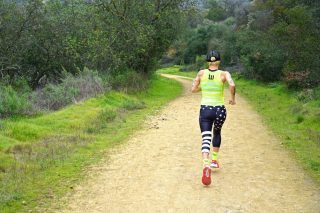
When you are in the middle of what seems to be the longest run that will never end, every little bit helps, from the perfect playlist to the perfect outfit. If you are looking for a way to showcase your creative side out on the roads and trails, these brands have you covered.
We rounded up five apparel brands that are pushing the envelope and offering some truly off-the-wall prints, colors and graphic-tees to help you show off your personality, no matter where you choose to run.
RELATED: 6 Small Running Brands Making Big Impacts
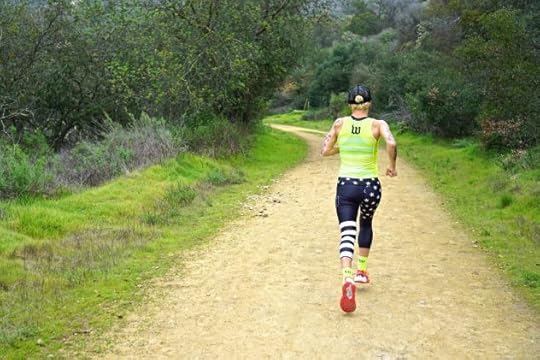


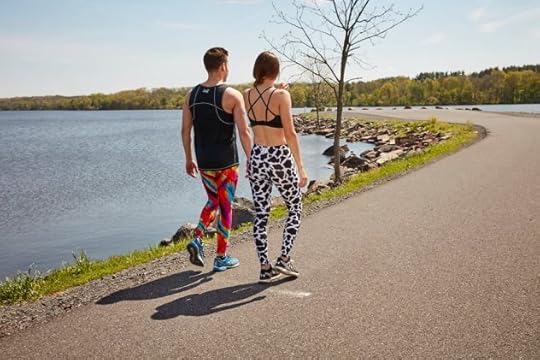
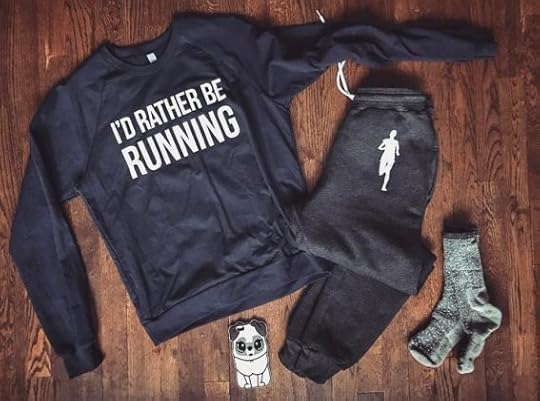
The post 5 Running Brands That Show Off Your Personality appeared first on Competitor.com.
Almost Any Runner Can Finish A 100-Mile Ultramarathon
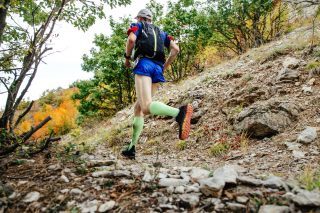
In my experience, most ultramarathon athletes, even the elites, find success through a lack of failure on race day. They achieve their goals, win races, and get those coveted belt buckles not because they ran one section very well but because they prevented the negative. They prevented time spent at 0 miles per hour. They prevented themselves from becoming a nauseous, sore, blistered, battered, and stumbling mess. They continued to be able to eat, drink, and locomote down the trail, even if it was not very fast.
Because so many things can go wrong, and the penalties for failure are high, “success by lack of failure” is a key element in successful ultramarathon running. These failure points are somewhat universal, as indicated by the research I cover further in my book Training Essentials for Ultrarunning, and help define the limiting factors for ultrarunning. The very small exception is elite athletes competing in 50Ks and 50-mile distances and flat 100Ks. This is because the finish line for the elite athletes in those races often comes before the failure points have a chance to impact performance.
All reasonably healthy individuals can locomote at the necessary speed to beat the cutoffs for any ultramarathon. I say this not as an opinion but as a biomechanical fact. The preferred walking speed for the average human is around a 19-minute mile (Levine and Norenzayan 1999; Browning and Kram 2005; Mohler et al. 2007). With a little effort, one can easily achieve 18-minute miles, which is a pace that would yield a 30-hour 100-mile finish.
RELATED: The Top 4 Training Mistakes In Ultrarunning
As of this writing, Timothy Olson holds the course record for the Western States 100 at 14:46:44. This time works out to about 8:50/mile. When we tested Timothy in our lab, his lactate threshold pace was under 6:00/mile. At a pace slower than 6:00/mile, his aerobic system can keep up with his energy demand, delivering oxygen to his muscles at a rate that is sustainable with few negative byproducts.
Having coached Timothy since he set that record, I can attest that on any given day, an 8:50/mile pace is not challenging for his cardiovascular system, even on terrain similar to that of Western States. Yet if you look at his Cal Street section (from mile 62 to mile 78), you will see that he ran for 16 miles with a net elevation loss at a pace of nearly 9:00/mile. From the standpoint of cardiovascular fitness, that 9:00/mile pace, which is more than 50 percent slower than his lactate threshold pace, was easy. It was essentially a normal recovery-run pace for him.
So why, on race day, 62 miles into a record-setting performance, couldn’t Timothy run faster than his normal recovery-run pace? The answer lies in the fact that there are many stressors on race day, and success in an ultramarathon has far more to do with your ability to cope with the sum total of those stressors than with just the capacity of your cardiovascular system.
How you handle those other stressors determines whether you succeed due to lack of failure.
RELATED: 6 Tips To Get Through Your First Ultramarathon Successfully
This excerpt comes from Training Essentials for Ultrarunning by Jason Koop. In his book, Koop reveals the highly effective ultramarathon training methods he uses with elite ultrarunners and shows how you can use them, too.
The post Almost Any Runner Can Finish A 100-Mile Ultramarathon appeared first on Competitor.com.
Gear We Love: July 2017

From jogging strollers that light up at night to the perfect running skort for summer, the following gear items are must-haves according to our editors and contributors. See what they have to say about this month’s favorite running gear.
RELATED: 7 Accessories To Help You Adjust To The Heat This Summer
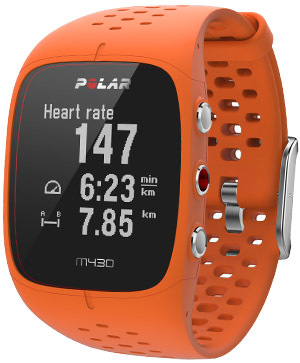
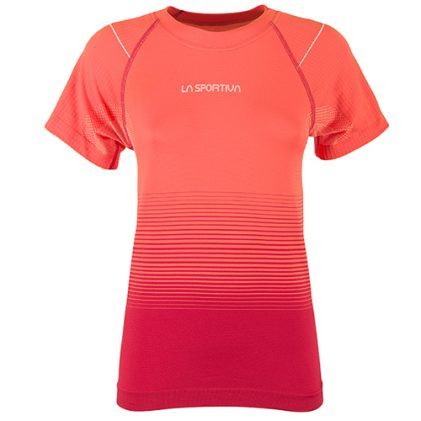

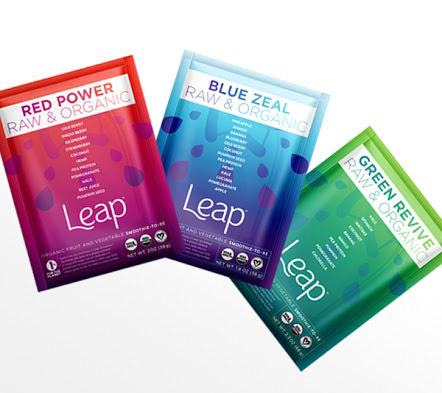

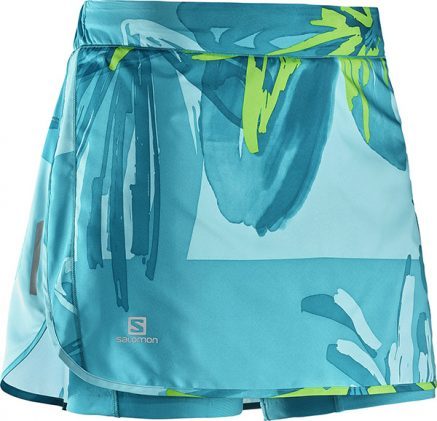

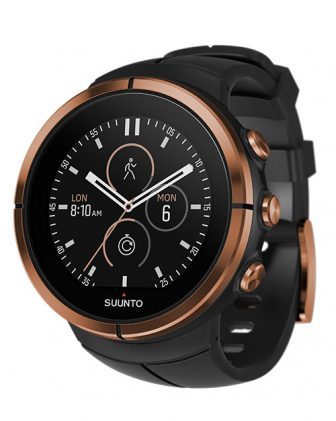

The post Gear We Love: July 2017 appeared first on Competitor.com.
July 18, 2017
The Lowdown On Three Different Heart-Rate Training Methods
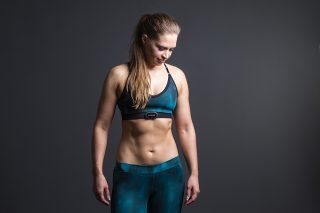
In the last few years, heart-rate tracking has rapidly evolved with more accurate sensors and algorithms, new methods of detection and even locations to wear devices. If you don’t want to wear a traditional chest strap, now your watch or even earphones can track the rise and fall of your heartbeat. Whether you want to do some basic tracking or use heart-rate-zone training—now an option with most run and fitness apps and watches—your pulse gives a key metric for measuring the intensity of exercise, your physiological progress and recovery as well as the quality of sleep. Here are the basics on different methods…
Chest Straps
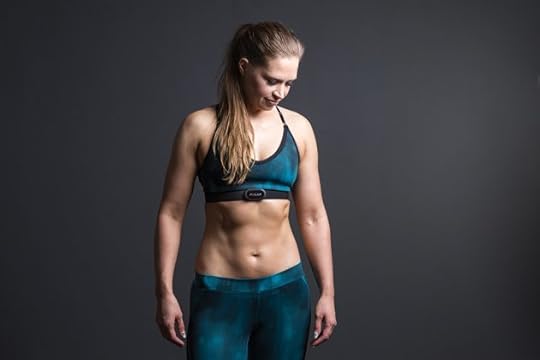
Quite frankly, this option isn’t particularly comfortable for most, but it does have certain advantages. Chest-based heart-rate monitors work by detecting and transmitting the electric charge the heart emits when it contracts, and your beats are shown on your watch or a compatible app. In dry, cold conditions, they can take some time to “warm up” and reliably detect. If you also swim and want to record heart rate, your best bet is a run- and swim-enabled chest strap with data storage such as the Garmin HRM-Swim ($100), Suunto Smart Sensor ($85) or new Polar H10 ($90), since you don’t have to carry or wear anything beyond the strap. Data storage is important as radio signals such as Bluetooth don’t transmit well in water. The new Polar is the most comfortable chest strap we have ever worn; the pod is slightly curved up at the electrodes with less pressure on the edges, it has non-slip dots along the strap and a flat, plastic snap closure instead of a metal one.
RELATED: 9 Tips and Tricks For Your GPS and Heart Rate Monitor
Wrist-Based Optics

Many, if not most, GPS running watches now offer wrist-based optical heart-rate sensing. It is continually improving and is very close to the accuracy standard set by chest straps. This single-device solution has a distinct advantage of comfort and convenience. LED lights shine through your skin, and the reflected light captured by the sensor detects fluctuations in blood flow. These can be inaccurate with variations in blood flow to the extremities, which can be affected by cold temperatures, vigorous motions or even gripping weights or handlebars. Skin pigmentation can also impact the light shining through skin. To provide better reliability, brands are going beyond the usual two or three lights to as many as six (Polar M430, $300, and Android Wear M600, $330) and mixing green and orange LEDs (Suunto Spartan Wrist HR, starting at $499). In some cases, such as with Garmin Elevate (starting at $130) and Fitbit PurePulse ($150 or more), sensing is continuous to help inform your overall status and not just workouts. Accuracy is also very dependent on fit; a good seal prevents air and light that can interfere with sensing from sneaking in or confusion between blood flow and cadence. Also fitness bands can transmit to apps (and some watches) to add the benefits of heart-rate training to devices you already have.
Earbuds
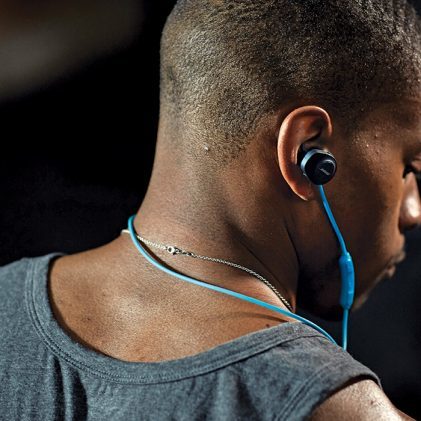
With the miniaturization of components and longer battery life, heart-rate sensing earbuds have emerged in the last year, starting with Bragi Dash ($336), which even included a 4GB music player in the earbud. In-ear optical heart-rate sensing is ideal for those who run with a phone or work out in the gym with music and prefer to hear stats and info. About the size of standard earbuds, they include a tiny heart-rate sensor in at least one earbud. As the head has good blood flow, it is an ideal place for sensing, but fit is critical for a reliable reading. The completely wire-free Jabra Elite Sport ($250) will not even let you see heart-rate data in its app until it determines you have a good fit. Going beyond heart rate, some of these earbuds add sensors such as accelerometers to count gym reps, barometric altimeters and even speech recognition. The new LifeBeam Vi ($249) provides great music quality and a beginner-focused heart-rate-based training program powered by artificial intelligence with on-the-run speech recognition. Simpler, the Bose SoundSport Pulse ($200) just gives you great sound and heart rate. These generally can’t simultaneously transmit data to a GPS watch, so plan on using a phone app.
RELATED: First Look At Advanced Earphones, Fitness Trackers and Apps
The post The Lowdown On Three Different Heart-Rate Training Methods appeared first on Competitor.com.
Today Is The First Ever National Obstacle Course Racing Day

Photo: Courtesy of Warrior Dash
Mark your calendars because today (July 18) is the first official National Obstacle Course Racing Day according to Warrior Dash. The day commemorates the first ever Warrior Dash race which took place on July 18, 2009 in Joliet, Ill., and has seen more than 3 million people complete its races since then. Fun fact: the following year, Warrior Dash launched the first obstacle course racing series nationwide, paving the way for the industry.
“National Obstacle Course Racing Day, is a day of celebration for everyone. Whether you’re a dedicated OCR athlete or newcomer to the series, we want everyone to celebrate their obstacle course racing experience,” said Ryan Kunkel, co-CEO of Red Frog Events, the producers of Warrior Dash. “We’re looking forward to celebrating National OCR Day for years to come and introducing a new wave of participants each year to obstacle course racing.”
RELATED: From Nude Model to Elite Obstacle Course Racer
Generally speaking OCR events have become an internationally recognized sport over the years. Running USA 2015 data even found that OCR participation surpassed traditional marathon and half marathon participation combined.
“Warrior Dash helped lay the foundation for what has become a robust obstacle course racing industry,” said Brett Stewart, co-Founder of Mud Run Guide and US OCR Championships. “Warrior Dash continues to be a leader within the OCR industry, and has established itself as a great entry-level event for novice participants as well as a fun event for the most seasoned competitors.”
In celebration of #NationalOCRDay check out these tips on how to survive an obstacle course race and which ones to sign up for this year. Also, participants can sign up as a St. Jude Warrior when registering for a Warrior Dash 5K. All donations fundraised as a St. Jude Warrior will go to the St. Jude Red Frog Events Proton Therapy Center in Memphis.
RELATED: Q&A With Obstacle Course Racer Amelia Boone, The Modern Masochist
The post Today Is The First Ever National Obstacle Course Racing Day appeared first on Competitor.com.
4 Simple Stretches You Should Do After Every Run

Stretching—that one thing we usually “forget” to do, even though we know we really need to! Get to it with this easy yoga-inspired routine targeting the major muscle groups used most during running. Do these stretches after your workouts to keep your legs feeling good and reduce your risk of injury.
Hold each for 30 seconds or more. Perform on both sides.
Calf stretch
Get into a downward dog position, lowering your heels all the way to the floor if you can. To deepen the stretch, bring one knee forward or place your foot behind the opposite ankle to really target the lower leg.
Quad/hip stretch
Get down on one knee with the other leg bent out in front of you. Place hands on the thigh and lean forward to stretch the quad and hip on the lower leg.
RELATED: Why You Should Stretch After Your Run And Not Before
Hamstring stretch
Start in the same position as the last stretch. Then sit back to straighten out the front leg with your hands on the floor, feeling the stretch in the back of the leg.
Butt stretch
Sit with legs straight out in front of you and bring one foot to the outside of the other knee. Hold your knee with your arm or hand and twist your torso inward. Make sure to keep both sit bones on the ground to target the buttocks. Place hand behind you and twist further for a deeper stretch. (This one feels really good after running hills!)
Routine by Lindsay at Fit Mix Mom. See more on Facebook and Instagram — fitness motivation, workouts, healthy recipes and more!
The post 4 Simple Stretches You Should Do After Every Run appeared first on Competitor.com.
Ryan Hall's Blog
- Ryan Hall's profile
- 21 followers




